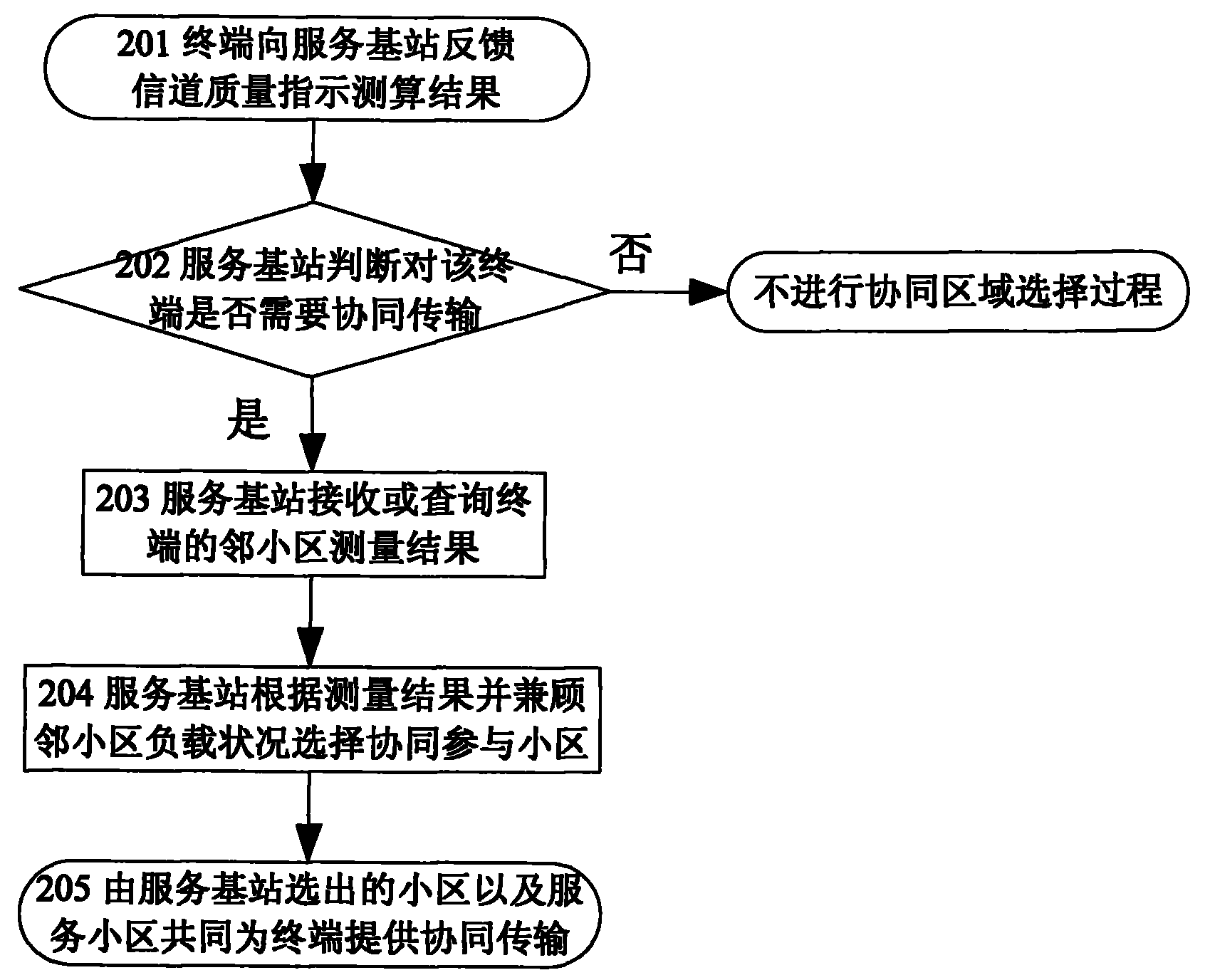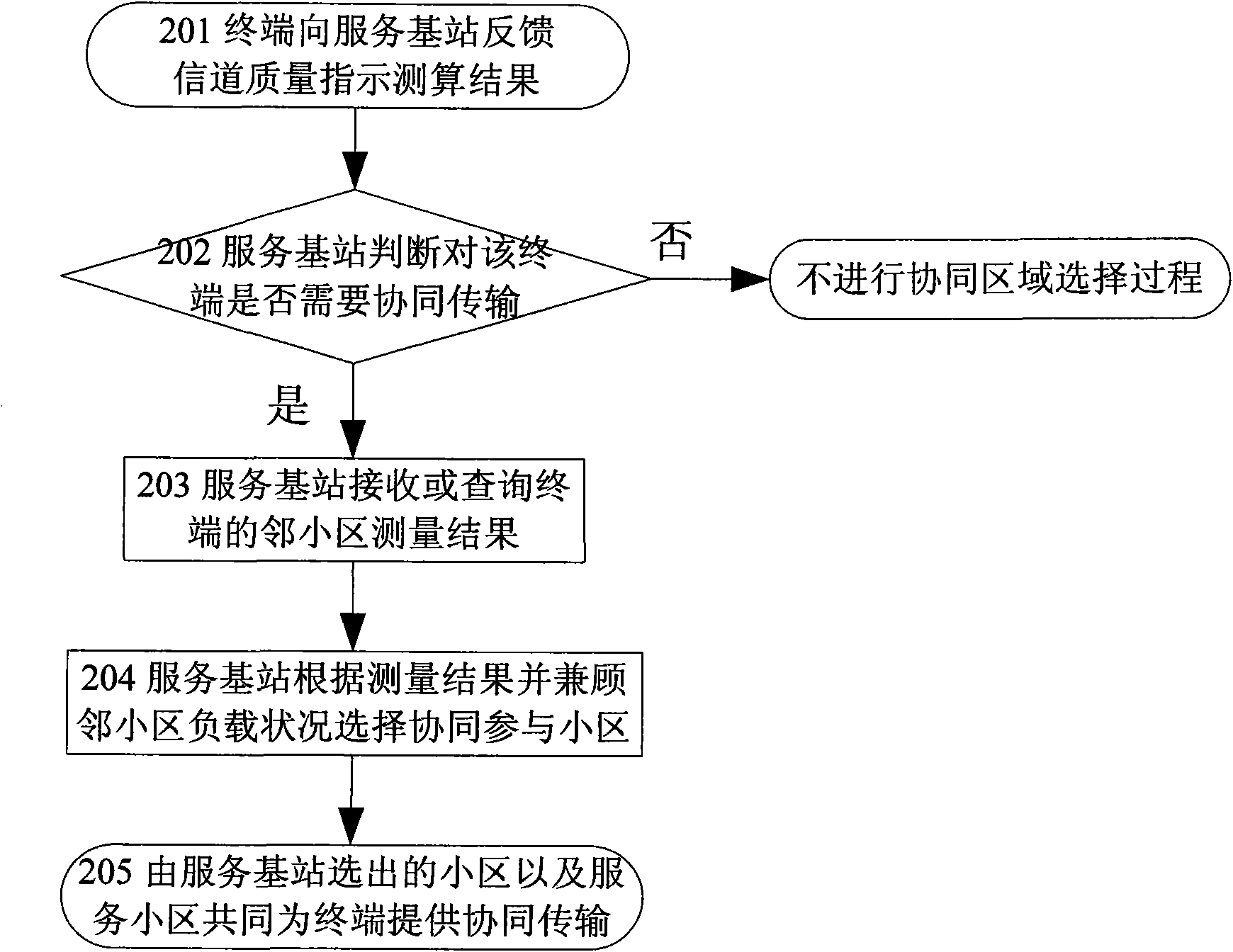Cooperative cell selection method participating cooperative transmission, service base station and communication system
A technology for coordinating cells and serving base stations, which is applied in the field of communication, and can solve problems such as inflexibility, inability to consider the time-varying network load of the cell channel, and unspecified problems
- Summary
- Abstract
- Description
- Claims
- Application Information
AI Technical Summary
Problems solved by technology
Method used
Image
Examples
no. 1 approach
[0048] The serving base station determines that the terminal needs to provide the coordinated transmission service according to the CQI measurement result fed back by the terminal. The serving base station selects two adjacent cells that are suitable for coordinated transmission for the terminal in the latest adjacent cell measurement report fed back by the terminal, so that the serving cell and the two adjacent cells form a coordinated cell to provide coordinated transmission for the terminal.
[0049] The adjacent cell measurement report contains multiple adjacent cell measurement results (ie RSRP, RSRQ), and the format of the measurement report is:
[0050] Serving cell ID: RSRP and RSRQ from the serving cell to the terminal;
[0051] ID of neighboring cell 1: RSRP and RSRQ from neighboring cell 1 to the terminal;
[0052] ID of neighboring cell 2: RSRP and RSRQ from neighboring cell 2 to the terminal;
[0053] ID of neighboring cell 3: RSRP and RSRQ from neighboring cell...
no. 2 approach
[0070] The serving base station determines that the terminal needs to provide the coordinated transmission service according to the CQI measurement result fed back by the terminal. The serving base station allocates uplink resources to the terminal and sends a reporting instruction. The terminal uses the resources to feed back the latest neighbor cell measurement results to the serving base station. The serving base station selects 2 neighbor cells from the neighbor cell measurement results. The adjacent cells form a coordinated cell to provide coordinated transmission for the terminal.
[0071] As shown in Figure 5, the serving base station starts to select a coordinated cell for the terminal at T2. The serving base station does not directly use the terminal measurement report received at T1 to make the selection, but sends an uplink resource allocation signal to the terminal at T3. command, requiring the terminal to feed back the latest measurement report on the uplink resou...
no. 3 approach
[0082] The serving base station determines that the terminal needs to provide the coordinated transmission service according to the CQI measurement result fed back by the terminal. The serving base station allocates a small amount of uplink resources to the terminal, and the terminal uses the resources to feed back the best 5 neighbor cell IDs in the latest neighbor cell measurement results to the serving base station, and the serving base station selects 2 according to the resource usage and load conditions of the neighbor cells. cells, so that the serving cell and the selected two adjacent cells form a coordinated cell to provide coordinated transmission for the terminal.
[0083] As shown in Figure 6, the serving base station starts to select a coordinated cell for the terminal at T2. The serving base station does not directly use the terminal measurement report received at T1 to make the selection, but sends an uplink resource allocation signal to the terminal at T3. So, t...
PUM
 Login to View More
Login to View More Abstract
Description
Claims
Application Information
 Login to View More
Login to View More - R&D
- Intellectual Property
- Life Sciences
- Materials
- Tech Scout
- Unparalleled Data Quality
- Higher Quality Content
- 60% Fewer Hallucinations
Browse by: Latest US Patents, China's latest patents, Technical Efficacy Thesaurus, Application Domain, Technology Topic, Popular Technical Reports.
© 2025 PatSnap. All rights reserved.Legal|Privacy policy|Modern Slavery Act Transparency Statement|Sitemap|About US| Contact US: help@patsnap.com



